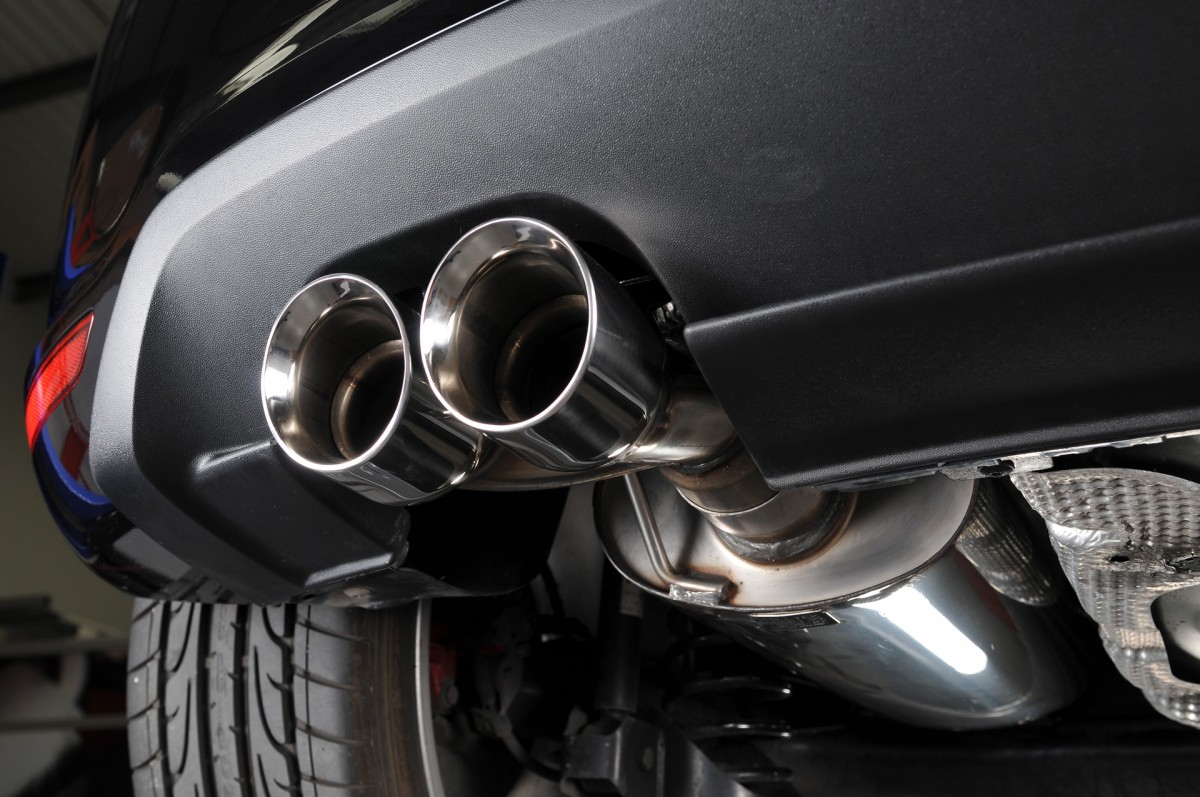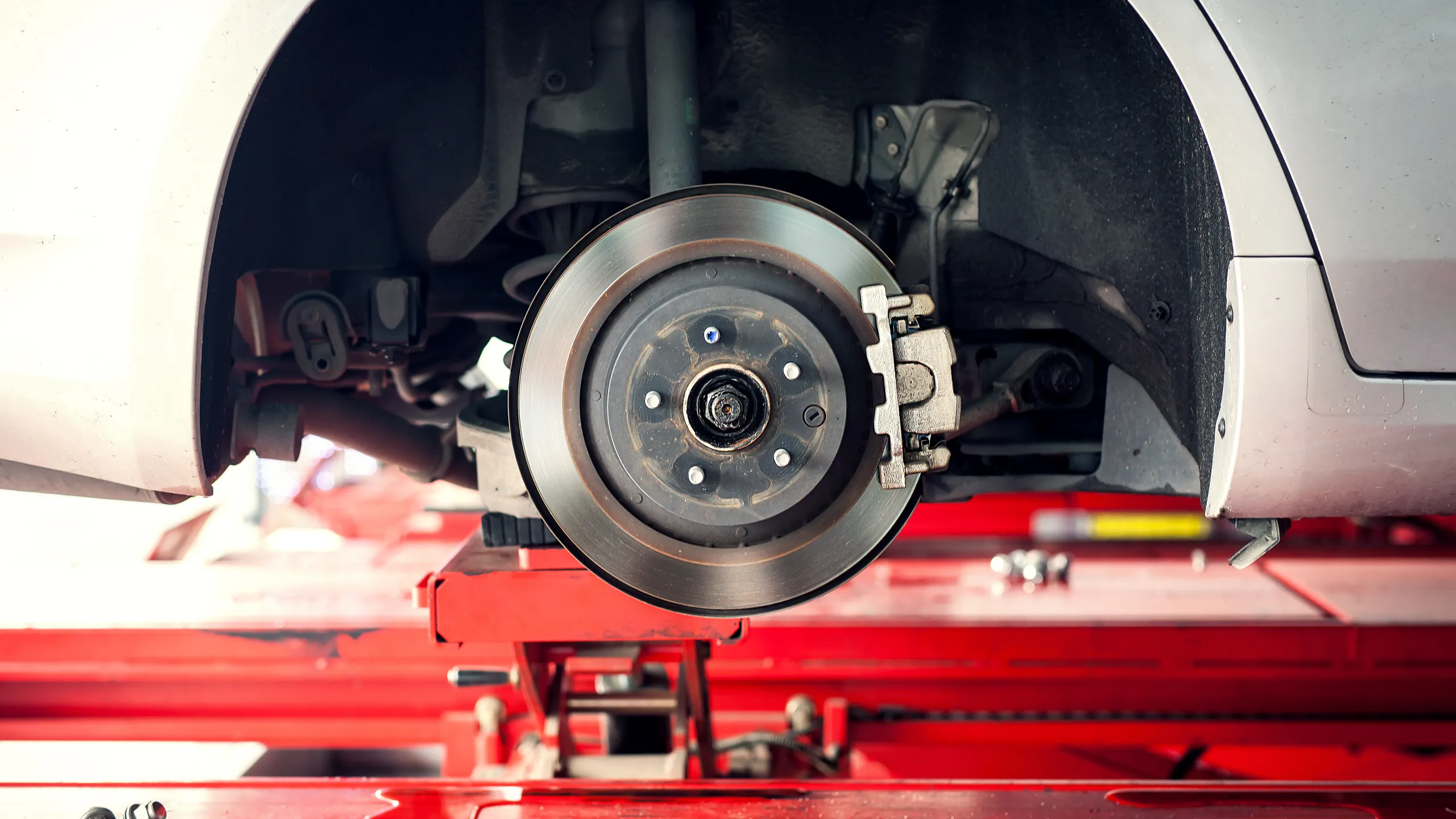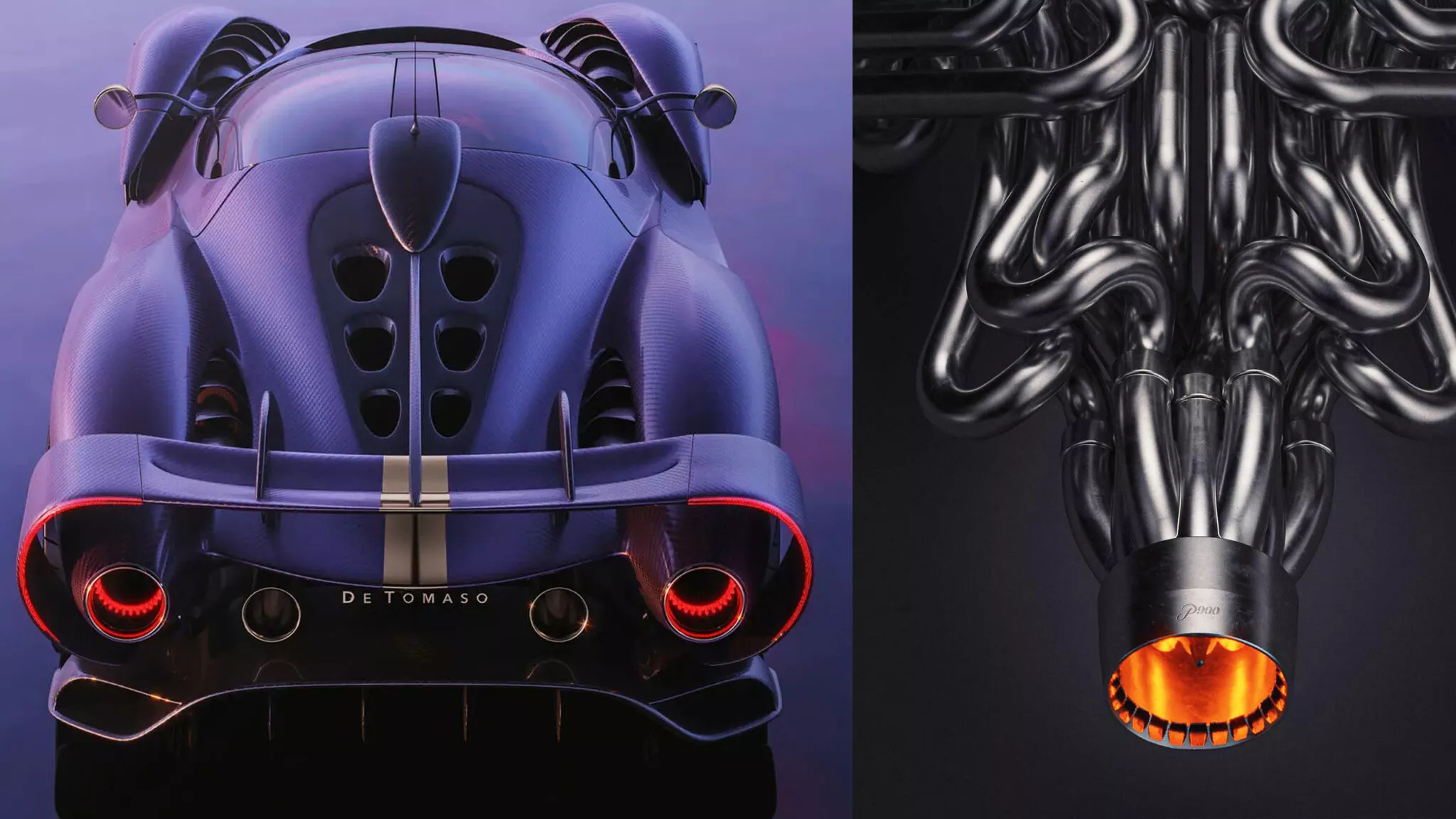The box on the edge of the exhaust pipe is the muffler, and its job is to decrease the noise that comes out of the tailpipe. These noise limiters are installed on cars in most parts of the world to keep pedestrians and residents happy. While this takes away from the fun of hardcore car enthusiasts who like their cars to make the maximum roar, everyone else, after all, should be satisfied.
This article will touch on the origin of mufflers, what it does, and ways to replace it. We hope this article will be useful and interesting to you.
Muffler History
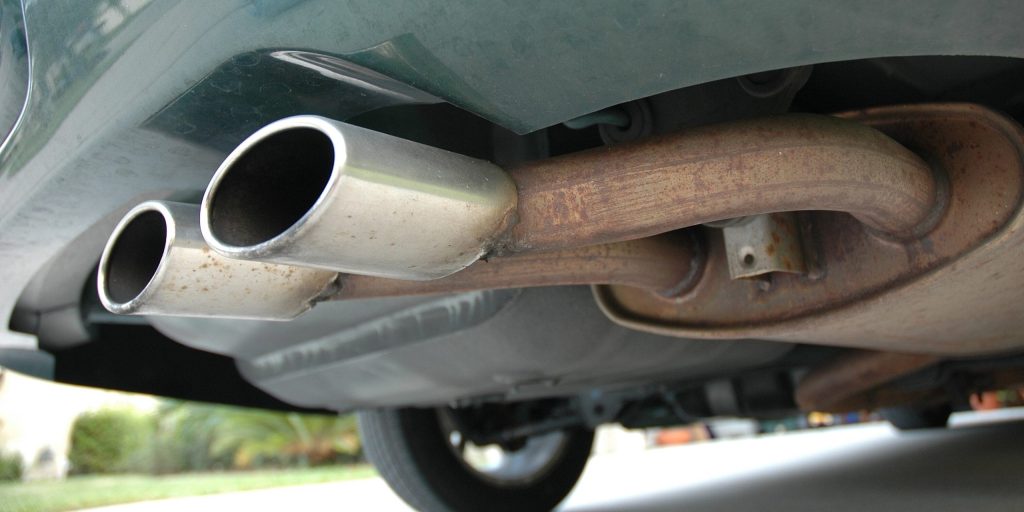
Milton and Marshall Reeves were the first to patent an exhaust muffler in 1897. Since then, the muffler has become increasingly sophisticated in terms of noise reduction. In the 1960s, a catalytic converter was added into the exhaust system to reduce the number of harmful gases emitted by the car into the air.
Catalytic converters are also known as catalytic mufflers. It should not be mixed up with the standard muffler we are talking about in this article. The muffler we are discussing today is also referred as a silencer because it reduces the noise level. It makes sense.
Like we said at the beginning, for most of the 20th century, many countries imposed severe limitations on the usage of automobile mufflers. These laws have been in place to maintain noise pollution at the lowest possible level.
The perfect place to experience the true noise of a motor and exhaust, without mufflers, is the racing track. They tend to have less stringent noise limits, with the cars equipped with everything that allows them drive the fastest possible way. In the realm of car racing, higher speeds usually mean louder noise.
How does a Muffler Work?
A muffler or a silencer, as we saw above, reduces the noise generated by an exhaust system.
A typical automobile engine is a continuous chain of very intense explosives reactions, with about 600 to 10,000 rpm. What results is what many people might call excessive noise. However, petrolheads love the noise, but the hindrance for them is that in most countries it is necessary to have a muffler.
When you cut open the muffler box, you’ll discover a pair of rather uncomplicated tubes. Nothing too difficult here. Mufflers use the destructive interference principle to reduce noise. It’s the scientific principle that when two sound waves collide, they produce an acoustic void. You may also find that the muffler is likely to include fiberglass, or some other sound absorbing material. This dampens the noise when the sound waves pass through it. Technically speaking, this decreases the amplitude of sound waves.
How do I Know If My Muffler Has a Problem?
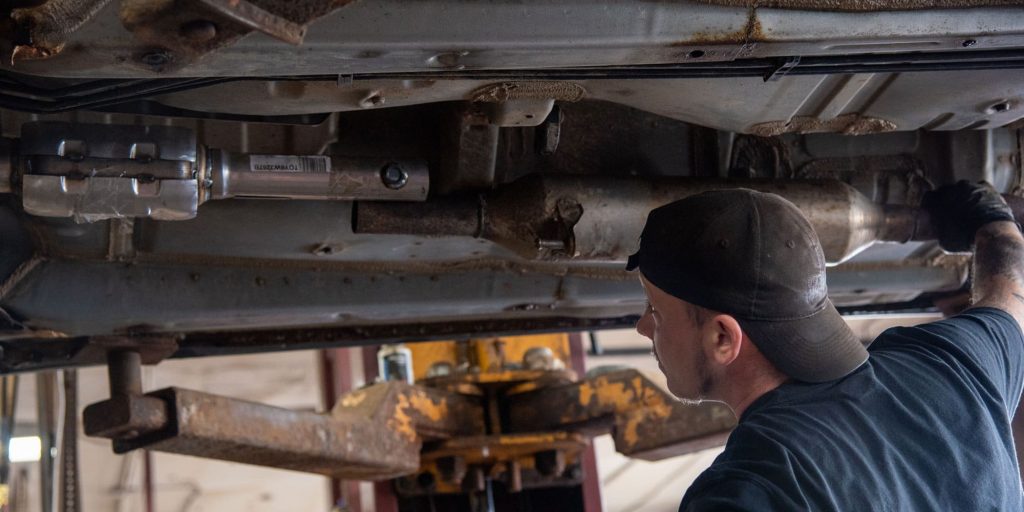
Here we take a look at a list of possible muffler problems and tell you to identify if something is seriously wrong.
- There’s a hole in the muffler. – That doesn’t take a rocket scientist to realize that this is not quite an ideal scenario. So if you see a clear hole in a muffler, it needs to be fixed. This is apparent if you’re viewing the vehicle from below, including when it’s over an inspection pit or high up on a car ramp. You may also spot it if you lean behind the vehicle and take a quick peek. These kinds of holes are typically caused by normal deterioration, as the metals corrode and rust. They might be induced by powerful jolts, such as potholes, speed bumps, or debris.
- Your exhaust will seem noisier. – When the exhaust has a hole in it, it may sound noisier, but moreover, it may also sound “out of tune”. You are the best judge of your car because you are familiar with the overall noise it makes. As a result, if you think there is anything wrong with the noise being made, but can’t identify what it is, a muffler has to be one of your first stops.
- The rear of the car is producing loud vibrations. – Whatever it is, hopefully, it’s just your muffler. Otherwise, you’ve got a potentially major issue on your hands.
- Your car occasionally experiences power loss or struggles and slightly jumps up. – While this might be the case for a variety of reasons, one possibility is that your muffler has been damaged.
- Reduced fuel efficiency. – Many factors can contribute to this if your tank is emptying faster than usual. However, a damaged muffler might be one of them.
We’ve organized these issues from the most apparent symptoms of a malfunctioning muffler to the less obvious ones.
It’s also worth noting that your muffler might occasionally just be slightly damaged. There might not be a huge side hole. Sometimes there is a hole, but it may only be as small as a pin’s or hairline fracture. That does not imply there is no issue – simply that it’s harder to detect.
Why Do Holes and Cracks Appear in Mufflers?
While they can sometimes be affected by speed bumps or potholes, one of the more common causes of such damage is the rotting of the inside of the muffler.
While the car’s engine is running, that part of the vehicle’s exhaust system is also dealing with exhaust fumes that are also filled with moisture. Eventually, it is inevitable that your muffler will start to rust, which nearly always occurs from inside to outside.
Is It Even Worth It to Repair the Muffler?
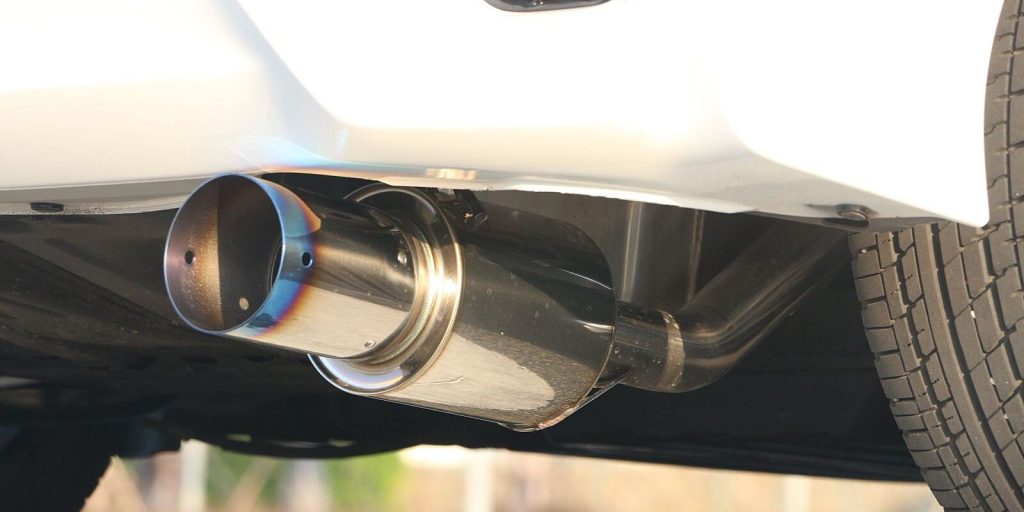
If you don’t have much money, having your muffler repaired may be a good idea. But the harsh reality is that this will not produce long-term results. It may take about 3-4 months, and you will start to notice symptoms of the existing problem again. This problem is usually related to internal muffler rust, and there is no solution to avoid it. It is expected that in several years, the part will become perishable. So eventually you will have to replace it.
As a result, we always recommend replacing the muffler as soon as possible. On how to do it yourself, we’re going to talk about it now. Other than that, this should be a fairly straightforward job for the auto shop to do it for you.
How to Replace a Muffler on Your Car
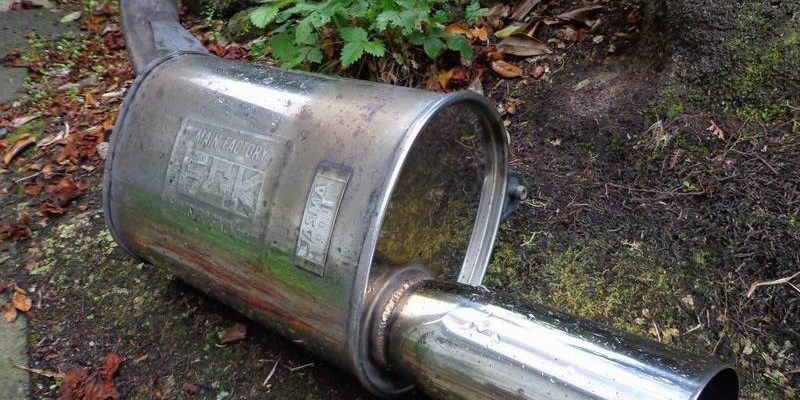
An exhaust muffler is often part of the exhaust pipe. On certain vehicles, particularly older models, you may discover that the whole tailpipe, from the front of the vehicle to the back, is one component. You could potentially buy an aftermarket exhaust pipe, including a muffler, cut it at the correct place, then use a sleeve or a clamp with some silicone to secure it in place. In some cases, however, the entire pipe will have to be replaced. Although this might appear to be a more expensive option, you may anticipate that it will be a less time-consuming process.
In cases where the muffler and exhaust pipe are two separate parts, replace them as follows:
- Jack up the vehicle from behind on a safe, level surface. Check that the surface is hard, such as concrete or asphalt, and not soft or slippery, such as grass, gravel, or icy road surfaces. Under the vehicle, place axle stands. It is not recommended to work with a vehicle that is supported only by a jack, as in some cases the jack may fail. It will make your job much simpler and safer if you have access to a truck rack or inspection pit. In fact, we would recommend using this option if at all possible.
- Make sure the replacement part you’re buying fits the shape of your car’s current exhaust and tailpipe, including any mounts and brackets.
- The exhaust pipe usually connects to the center pipe, front pipe, or catalytic converter with a bushing or clamp. These should be simple to remove using the correct sized ratchet and socket. You may need some grease, like WD40, and some brute force. Rust can be a possible problem as these bolts have likely been exposed to water continuously from the time they were installed.
- In some cases the clamp cannot be removed at once, and you may need to cut the tailpipe to start the process. You may need to cut the exhaust pipe, use pipe pliers to do this. You should never use an angle grinder or any similar cutting tool for this purpose. There will be a fuel tank next to the cut and a simple miss could ignite it. With pipe cutting pliers you will need more effort, but they are a lot safer. After you have disconnected a section of pipe, remove the clamp or sleeve. To do this, you may need a second person.
- To install a new exhaust muffler, you need to put a bushing on the tailpipe and secure it in place. To do this, you may need the help of another person.
- Once everything is aligned, slide the sleeve on the joint and seal with silicone. Tighten the sleeve as tightly as possible using a properly sized socket head.
- Before you lower the car to the ground, carefully check that everything is securely fixed. That’s it!
Sometimes you may get stuck. You may not be able to remove the original pipe, for example. If you do get stuck, it’s better to take your car to a professional mechanic or just meet with someone who understands the matter. In general, though, you’re unlikely to encounter much trouble doing a job like this.
Summary
Mufflers are required by law and are important for both social and legal reasons. To keep your car quiet is a show of good manners to those around you, and they will appreciate it. In addition, its absence is illegal, so you’ve got little choice in the matter.
Car care is a great way of keeping your vehicle, along with your relationships with the people who live near you.
Plus, do not ever be afraid to drive your car to a local garage to have parts replaced. You will need to pay about $200 to $400 for this work, and about $140 to $300 if you do it yourself.
Hopefully this article was helpful to you.
